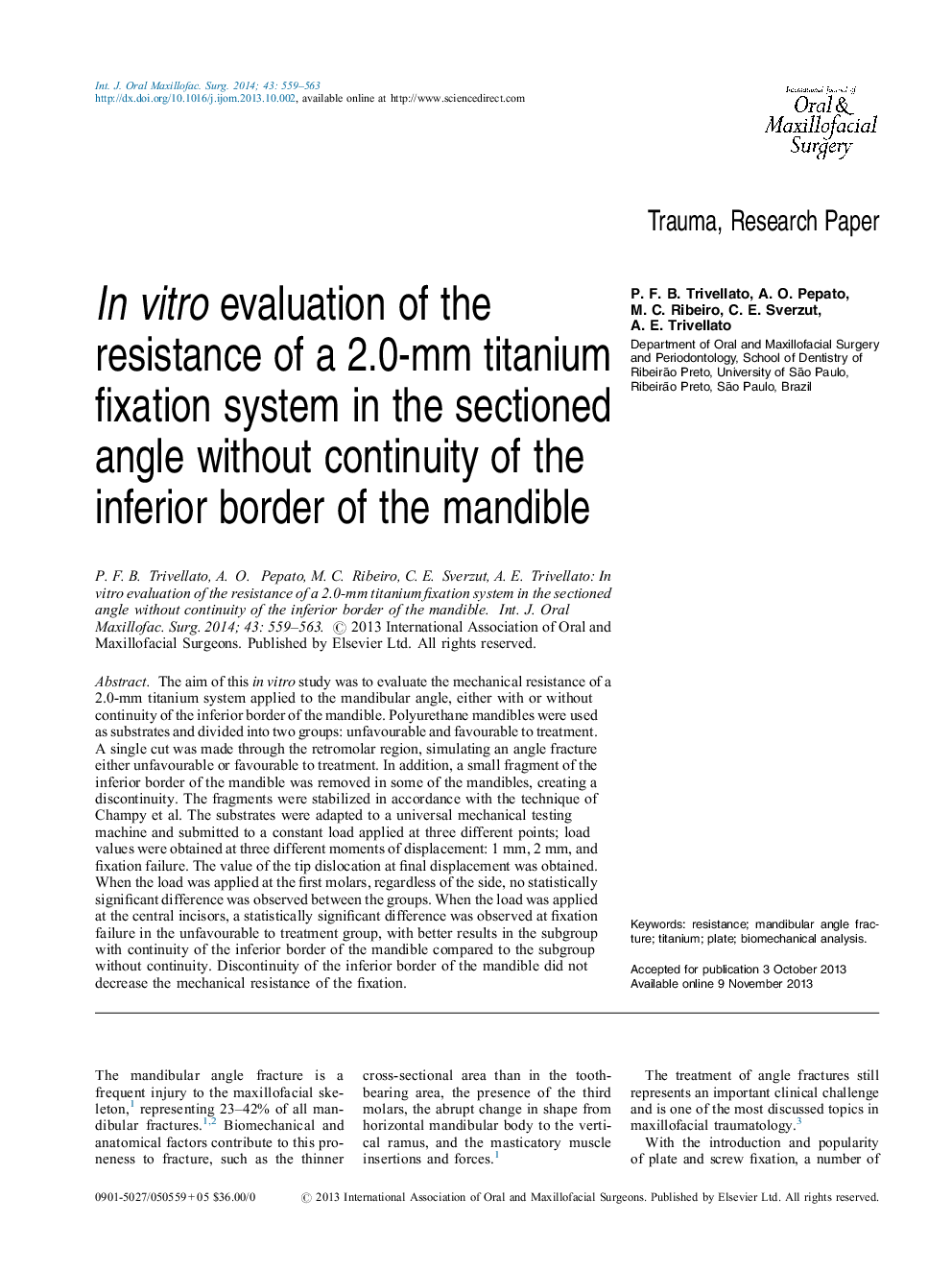| Article ID | Journal | Published Year | Pages | File Type |
|---|---|---|---|---|
| 3132289 | International Journal of Oral and Maxillofacial Surgery | 2014 | 5 Pages |
The aim of this in vitro study was to evaluate the mechanical resistance of a 2.0-mm titanium system applied to the mandibular angle, either with or without continuity of the inferior border of the mandible. Polyurethane mandibles were used as substrates and divided into two groups: unfavourable and favourable to treatment. A single cut was made through the retromolar region, simulating an angle fracture either unfavourable or favourable to treatment. In addition, a small fragment of the inferior border of the mandible was removed in some of the mandibles, creating a discontinuity. The fragments were stabilized in accordance with the technique of Champy et al. The substrates were adapted to a universal mechanical testing machine and submitted to a constant load applied at three different points; load values were obtained at three different moments of displacement: 1 mm, 2 mm, and fixation failure. The value of the tip dislocation at final displacement was obtained. When the load was applied at the first molars, regardless of the side, no statistically significant difference was observed between the groups. When the load was applied at the central incisors, a statistically significant difference was observed at fixation failure in the unfavourable to treatment group, with better results in the subgroup with continuity of the inferior border of the mandible compared to the subgroup without continuity. Discontinuity of the inferior border of the mandible did not decrease the mechanical resistance of the fixation.
